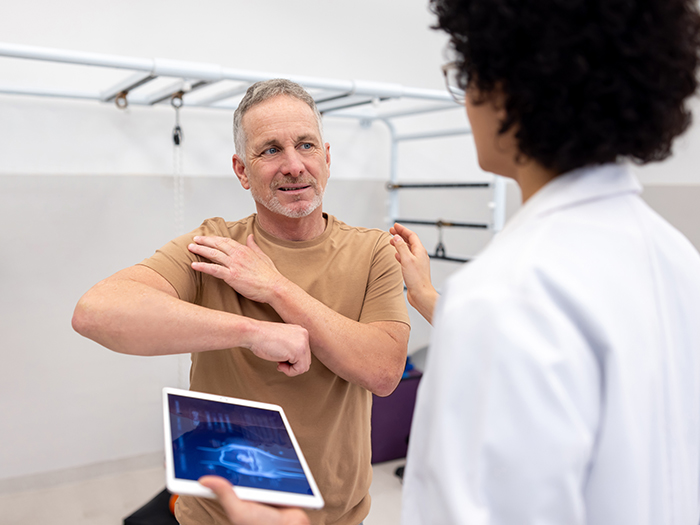Pain Management
How Virtual Reality is Changing the Way We Treat Chronic Pain

Virtual reality isn’t just for computer games anymore. Increasingly, the medical community — and insurers — are taking notice of its effectiveness to distract an individual from pain.
At Cedars-Sinai in Los Angeles, Calif., Dr. Brennan Spiegel has already found virtual reality (VR) therapy, which uses wearable technology to manage pain, effective in the hospital setting. Now he’s teaming up with Travelers, Samsung Electronics America, Bayer and appliedVR, which has developed a virtual reality platform specifically for use in the health care industry.
Dr. Melissa Burke, the national pharmacy director at Travelers, said she was “blown away” after speaking with Spiegel about his success with the technology and the pain reduction in his first study in the inpatient setting and at that point began to brainstorm how the Travelers population could benefit as well.
“We continue to look for alternatives to treat the root of chronic pain,” she said. “The use of VR is all about the perception of pain and it’s about taking injured employees out of the space that they’re in. Once they become immersed in the experience, the idea is that the pain melts away.”
Spiegel’s initial study included 100 patients who reported pain scores of greater than three on the Numeric Pain Rating Scale, which has a high of 10. Half of the patients received a 15-minute virtual reality session using VR goggles that immersed them in scenes of flying over Iceland or swimming in the ocean with whales, and nearly a quarter reported a drop in their pain scores after the treatment.
In the current study, participants who have recently suffered an orthopedic injury and report pain scores of 3 or greater will receive a digital pain-reduction kit, including a Samsung virtual reality headset, content including the Iceland experience and other peaceful simulations, as well as a transcutaneous electrical nerve stimulation (TENS) device to further treat lower back pain and muscle aches.
“The digital pain-reduction kit has the potential not only to become a first-line opiate-sparing pain management treatment option for workers’ compensation, but it could potentially be used more broadly to help battle the opiate epidemic.” — Dr. David Rhew, chief medical officer, head of Health Care and Fitness, Samsung Electronics
Each participant’s day-to-day activity, productivity and use of pain medication will be monitored via a wearable device. Dr. David Rhew, chief medical officer and head of health care and fitness for Samsung Electronics, is involved in the new study. He said if the kit reduces pain, shortens time to return to work and lowers costs, then it should be considered a first-line reimbursable treatment option for injured workers with severe and persistent pain.
“Today we have very few options for injured workers with severe, persistent pain, and opiates remain a core component of most treatment plans,” Rhew said.
“The digital pain-reduction kit has the potential not only to become a first-line opiate-sparing pain management treatment option for workers’ compensation, but it could potentially be used more broadly to help battle the opiate epidemic.”
Many Hurdles Remain for Virtual Reality
Dr. Teresa Bartlett, senior vice president, senior medical officer for Sedgwick Claims Management Services, said the use of virtual reality with biofeedback has taken off in the medical community as a means to help patients with chronic pain.
“It’s something that helps individuals heighten their awareness of their body, their breath, their response to pain,” she said. “Using virtual reality could potentially help them mitigate some of those negative effects on the body … it helps them escape that pain and gives them coping skills.”
However, questions remain about whether VR therapy will be adopted even if it is shown to be a success. Bartlett noted there is currently no billing mechanism in place for virtual reality/biofeedback therapy and much will need to be done to educate the public.
“I think that employers may be a little bit suspicious when something could appear like a virtual reality game,” she said. Also the price point will be important for employers to understand.
Bartlett said she is hopeful that the study yields positive results.
“I think any time we can give individuals coping skills that help them deal with pain without medication, it will lead to a better outcome on a claim,” she said. “I definitely think this will have a positive impact if the study is successful.”
Burke is optimistic participants in the study will experience pain relief like those in Spiegel’s first study, who only had a 15-minute VR session.
“In the future, we may have a pharmacy of virtual reality treatments available as an alternative [to opioids],” she said. &












